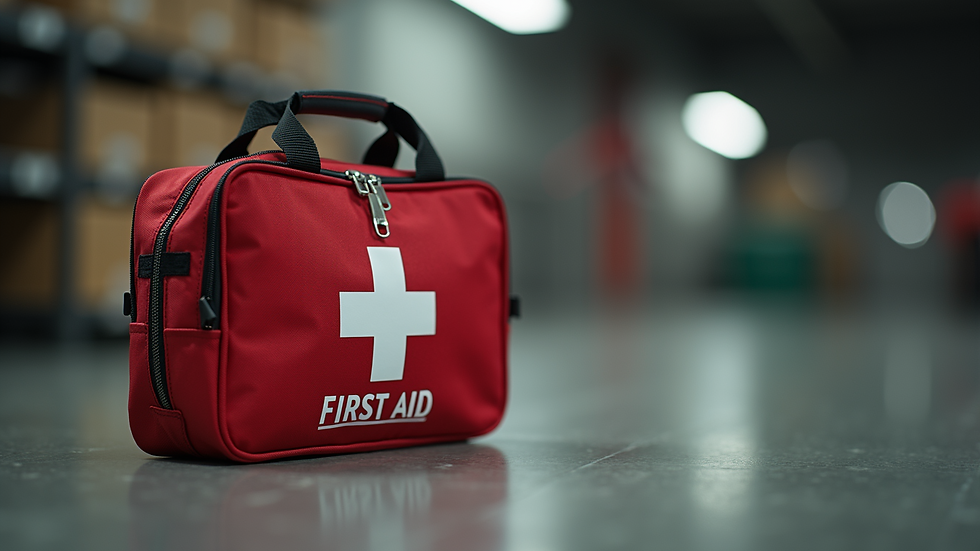Understanding the Value of AHA BLS Certification
- kisercpr
- Sep 8
- 4 min read
If you’ve ever wondered why so many jobs require an AHA BLS certification, you’re not alone. It’s one of those credentials that pops up everywhere—from hospitals to schools, construction sites to corporate offices. But what’s the big deal? Why should you care about getting certified? Well, pull up a chair, and let’s chat about why this little card in your wallet might just be one of the most important things you ever earn.
Why You Should Consider Getting an AHA BLS Certification
Let’s start with the obvious: knowing how to save a life is pretty darn important. But beyond that, the AHA BLS certification is a game-changer for your career and confidence. Whether you’re a healthcare professional, a teacher, or even a construction worker, emergencies don’t discriminate. They can happen anywhere, anytime.
Here’s the kicker: having this certification means you’re trained to respond quickly and effectively in critical situations. You’ll know how to perform CPR, use an AED, and manage choking emergencies. And trust me, when seconds count, those skills are worth their weight in gold.
Plus, many employers actually require this certification. It’s like a badge of trust that says, “Hey, I’m ready to step up when it matters.” So, if you want to boost your resume and stand out in your field, this is a smart move.

What You Need to Know About AHA BLS Certification
So, what exactly does the AHA BLS certification cover? The American Heart Association (AHA) designed this course to teach you the essentials of Basic Life Support (BLS). It’s not just about chest compressions and rescue breaths—though those are key parts. You’ll also learn how to:
Recognize life-threatening emergencies
Perform high-quality CPR for adults, children, and infants
Use an Automated External Defibrillator (AED)
Manage choking in responsive and unresponsive victims
Work effectively as part of a team during a resuscitation effort
The course is hands-on and interactive, so you won’t just be sitting through a lecture. You’ll practice skills, get feedback, and build confidence. And the best part? The certification is valid for two years, giving you plenty of time to put your skills to use before needing a refresher.

What is an AHA or BLS?
Alright, let’s break down the jargon. You’ve probably heard “AHA” and “BLS” tossed around, but what do they really mean?
AHA stands for the American Heart Association. They’re the folks who set the gold standard for CPR and emergency cardiovascular care training.
BLS means Basic Life Support. It’s the level of care that healthcare providers and trained responders give to someone who’s experiencing cardiac arrest or other life-threatening emergencies.
When you get an AHA BLS certification, you’re basically getting trained and certified by the best in the biz. The course is designed for healthcare providers and anyone who needs to know how to respond to emergencies in a professional setting.
Think of it like this: if CPR were a superhero skill, the AHA BLS course is your superhero training camp. You learn the moves, practice the techniques, and get ready to save the day.

How AHA BLS Certification Can Help You in Your Job
Let’s get real for a second. You might be thinking, “I’m not a doctor or nurse, why do I need this?” Well, here’s the thing—emergencies don’t care about your job title. Whether you’re a teacher, construction worker, or student, knowing how to respond can make all the difference.
For healthcare professionals, this certification is often mandatory. It ensures everyone on the team speaks the same language when it comes to lifesaving techniques. For teachers, it means being prepared to help a student or colleague in distress. Construction workers often face unique risks, and having BLS skills can be a literal lifesaver on the job site.
Even if your job doesn’t require it, having this certification shows you’re proactive and responsible. It’s a skill set that employers respect and appreciate. Plus, it’s a confidence booster—you’ll feel ready to jump in and help if the unexpected happens.
If you want to get certified or renew your skills, check out this aha bls course. It’s designed to fit your busy schedule and give you the hands-on practice you need.
Tips for Getting the Most Out of Your AHA BLS Certification Course
Taking the course is one thing, but making sure you really absorb the material is another. Here are some tips to help you get the most bang for your buck:
Show up ready to participate. This isn’t a sit-back-and-listen kind of class. You’ll be practicing skills, so wear comfortable clothes and be prepared to get hands-on.
Ask questions. If something doesn’t make sense, speak up. The instructors are there to help you understand, not just to lecture.
Practice, practice, practice. The more you practice CPR and AED use during the course, the more confident you’ll be when it counts.
Review the materials afterward. Most courses provide handouts or online resources. Take a few minutes to review them so the info sticks.
Keep your certification current. Remember, the certification lasts two years. Set a reminder to renew before it expires so you’re always ready.
Ready to Take the Next Step?
Getting your AHA BLS certification is more than just a box to check on your job application. It’s a powerful skill that can help you save lives and make a real difference. Whether you’re in healthcare, education, construction, or just want to be prepared, this certification is a smart investment in yourself.
So, why wait? Dive into the training, get certified, and join the ranks of everyday heroes who know how to step up when it matters most.

Remember, emergencies don’t wait. Being prepared means you can act fast and confidently. And that’s a skill worth having.

.png)



Comments